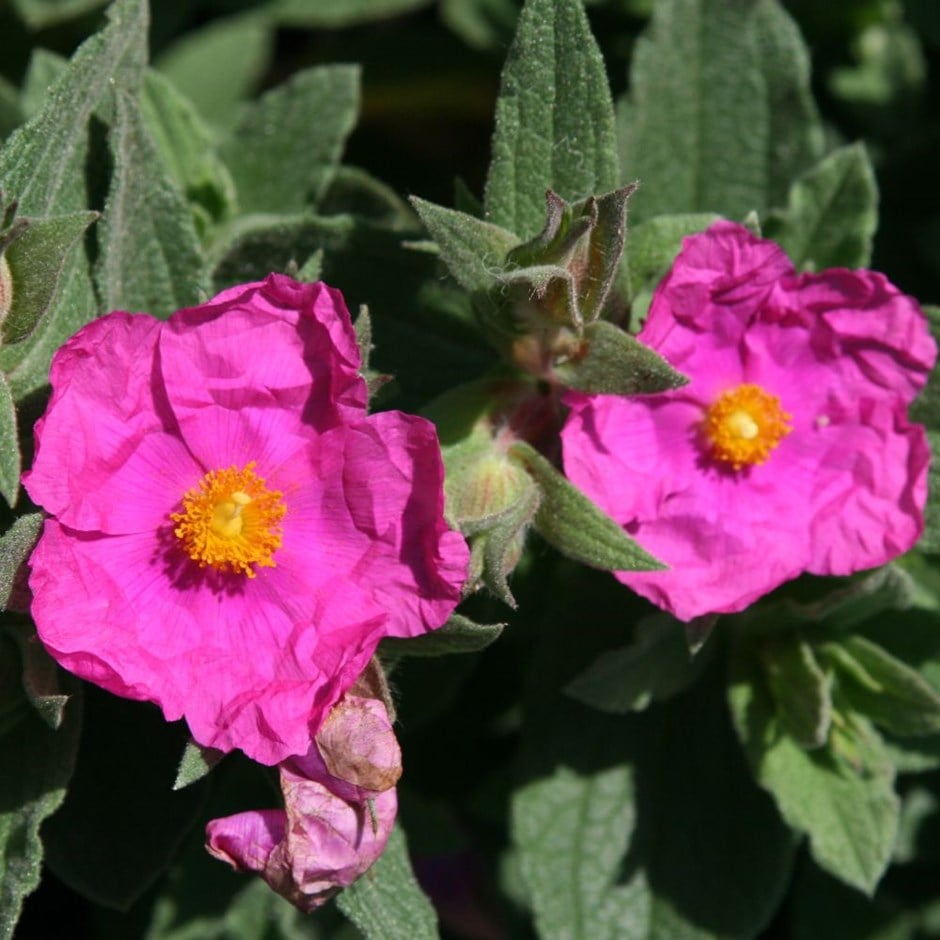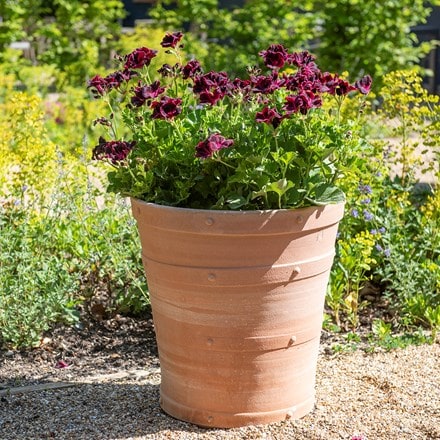Cistus × pulverulentus 'Sunset'
rock rose
- 2 litre pot
- £15.59 £25.99
- In stock (shipped within 2-3 working days)
- 3 × 2 litre pots
- £37.79 £62.99 £12.60 each
- In stock (shipped within 2-3 working days)
Delivery options
- Standard £5.99
- Position: full sun
- Soil: moderately fertile, well-drained soil, or loam-based potting compost for containers
- Rate of growth: average
- Flowering period: June to July
- Hardiness: frost hardy (may need winter protection in cold areas)
Originating from dry, rocky parts of the Mediterranean, this RHS award-winning rock rose is both drought-tolerant and low maintenance once established.
Plant Cistus × pulverulentus 'Sunset in a sunny spot with freely draining soil, and it will reward you with masses of magenta flowers, each with a prominent yellow eye, in midsummer.
Compact, yet with a spreading habit, it makes an attractive, evergreen edging plant for the front of a sheltered border, but will also do well in a large pot on a sunny patio.
Plant Cistus × pulverulentus 'Sunset in a sunny spot with freely draining soil, and it will reward you with masses of magenta flowers, each with a prominent yellow eye, in midsummer.
Compact, yet with a spreading habit, it makes an attractive, evergreen edging plant for the front of a sheltered border, but will also do well in a large pot on a sunny patio.
Plant rock roses in well-drained soil and a sunny, sheltered spot, as they thrive in dry conditions and dislike heavy, wet ground. If the soil is poor, mix in horticultural grit to improve drainage.
After flowering, pinch back young plants to promote a bushy shape. Lightly trim or cut back any stems that disrupt the plant’s natural form, but avoid hard pruning, as Cistus do not regenerate well from old wood.
Once established, they are drought-tolerant and low-maintenance, needing only occasional watering during prolonged dry spells. Mulch with gravel or grit to help retain soil warmth and moisture without trapping excess water.
After flowering, pinch back young plants to promote a bushy shape. Lightly trim or cut back any stems that disrupt the plant’s natural form, but avoid hard pruning, as Cistus do not regenerate well from old wood.
Once established, they are drought-tolerant and low-maintenance, needing only occasional watering during prolonged dry spells. Mulch with gravel or grit to help retain soil warmth and moisture without trapping excess water.

